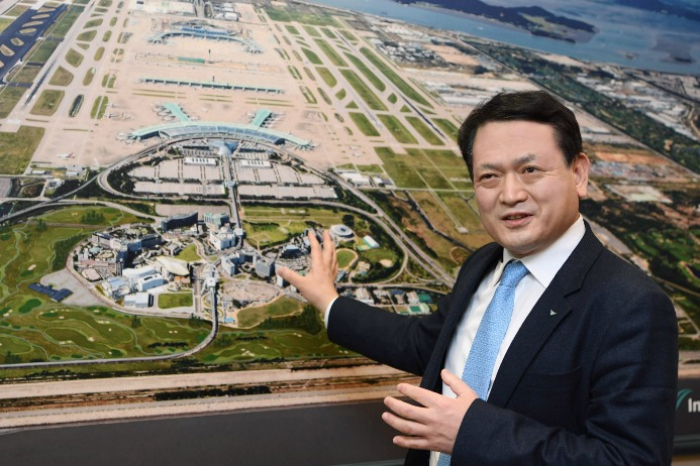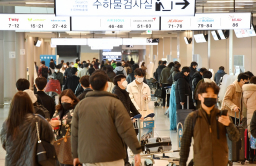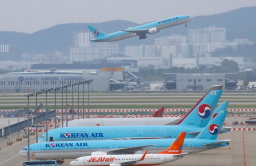-
KOSPI 2577.27 -2.21 -0.09%
-
KOSDAQ 722.52 -7.07 -0.97%
-
KOSPI200 341.49 +0.02 +0.01%
-
USD/KRW 1396 -2.00 0.14%
Korea's Incheon Airport celebrates 100 millionth transfer passenger
Airlines
Korea's Incheon Airport celebrates 100 millionth transfer passenger
It has outperformed its rivals in China and Japan in terms of transfer passengers amid the pandemic
By
Mar 03, 2023 (Gmt+09:00)
1
Min read
News+

Incheon International Airport, South Korea’s main air gateway, marked a milestone on Thursday as it welcomed its 100 millionth transfer passenger in 22 years since its opening in 2001.
The airport held a ceremony in Terminal 2 to commemorate the achievement and presented the lucky passenger with a golden key and a round-trip ticket from Korean Air Lines Co., the country’s largest carrier.
Kim Kyung-wook, CEO of Incheon International Airport Corp., the state-run operator of the airport, said the event was a testament to Incheon’s role as a global hub in Northeast Asia.
“The demand for transit passengers at an airport is the most basic measure that proves how much hub role that airport plays,” Mr. Kim said. “We will establish an optimal air network and leap forward as a global mega-hub.”
Incheon Airport has seen its transfer passengers grow steadily from 1.6 million in its first year of operation to 7.2 million in 2019, before the coronavirus pandemic hit the aviation industry hard.
The airport’s transfer passengers plunged to 540,000 in 2021 due to travel restrictions and border closures around the world. However, it has shown signs of recovery last year, recording 2.7 million transfer passengers, up 400% from 2021.
The airport has outperformed its rivals in China and Japan in terms of transfer passengers amid the pandemic, thanks to its strong network in North America and Southeast Asia.
The airport plans to further boost its transfer demand by launching various marketing campaigns in 2023 and strengthening its connections with destinations in Europe and Japan.
It also aims to capitalize on the reopening of borders with China and other regions that account for 20% of its total passengers (based on 2019) in the second half of next year.
Write to Jun-Wan Kang at jeffkang@hankyung.com
More To Read
-
Feb 27, 2023 (Gmt+09:00)
-
Dec 15, 2022 (Gmt+09:00)
-
Nov 24, 2022 (Gmt+09:00)
-
Mar 14, 2022 (Gmt+09:00)
-
 Korean stock marketKorea reopening stocks rally as govt. eases COVID-19 restrictions
Korean stock marketKorea reopening stocks rally as govt. eases COVID-19 restrictionsMar 11, 2022 (Gmt+09:00)






